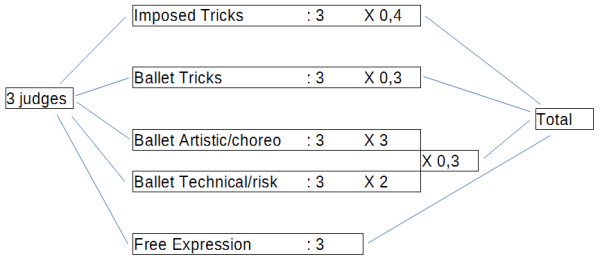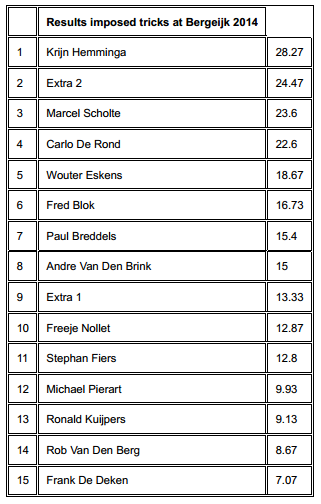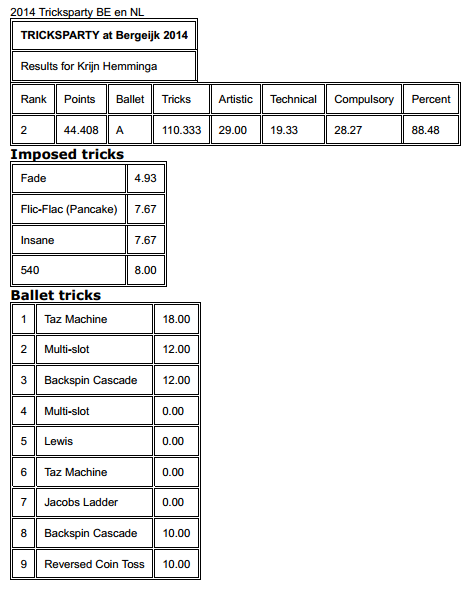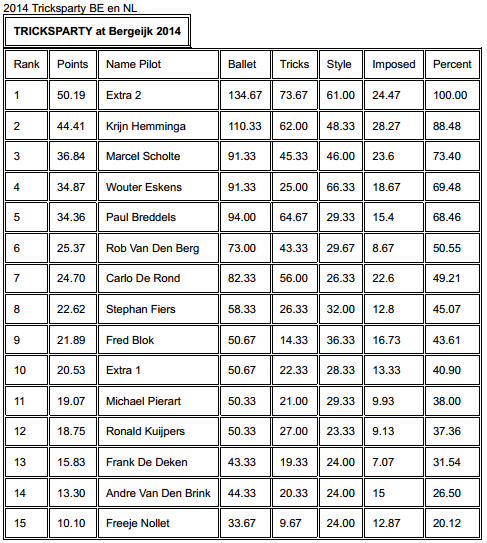Judging: Scores
Although judges don't need to know how the end total on a scoresheet is calculated, it's information that can come in handy for those who would like to run a competition or just are curious about it.
No big magic involved, just plain maths :-) You can see how it's done on the chart.
The scores for the imposed tricks are added up from the 3 judges, then divided by 3. That makes the score an average of the judges scores. It's weight on the overal score is 40% of that number. Starting from season 2015 there is also a component "Free Expression" where the judges give a score out of 10. That score is added to that fully 40% of above.
The 9 tricks in the ballet have their own scores depending on the groups the tricks are in. Adding those and dividing as well. The weight here is 30%.
The artistic part of a ballet gets a score on 20 points. Again, adding and dividing. Here, the initial weight in the style points is 60%, so we do multiply by 3. The technical part is composed the same, but weighs only 40%, so it's mulitplied by 2. These two are added up and give in the end total a weight of 30%.
Adding all those 3 parts, you get the end result.
On that result, for ranking reasons, we calculate that the winner has a score of 100. Each pilot following in the end result gets his score calculate as a percentage from the winners score. That way we can outrule the influence bad (or excellent) wind conditions may have on results. As a bonus, you can compare how well you did as a pilot against the result of the others.
For the rest of this page we give you the results for a competition that took place in Bergeijk, The Netherlands 2014. The result is adapted to 5 groups of tricks, so it differs from the real result. But it's a good example to show what result you get after all the calculations :-)



